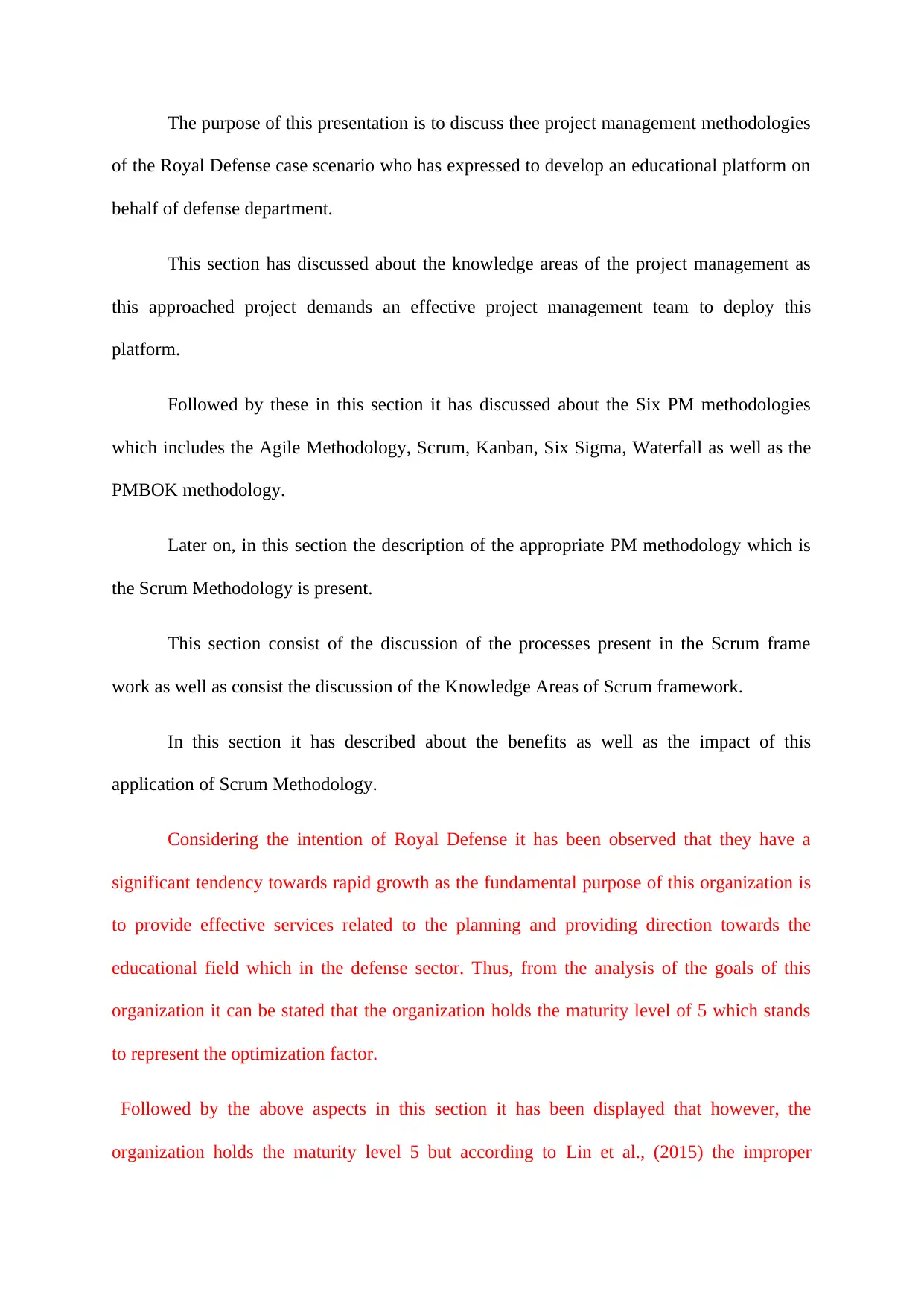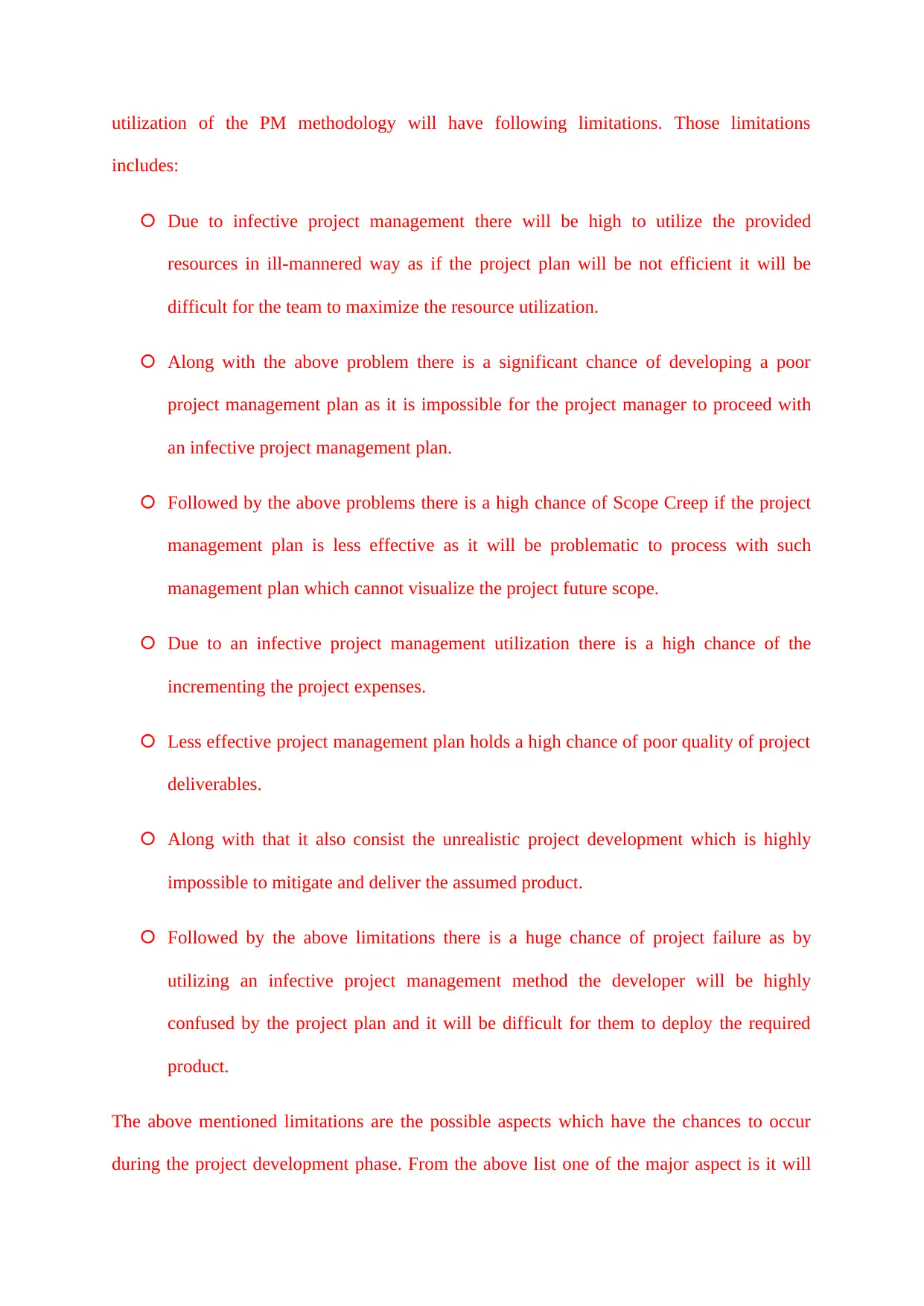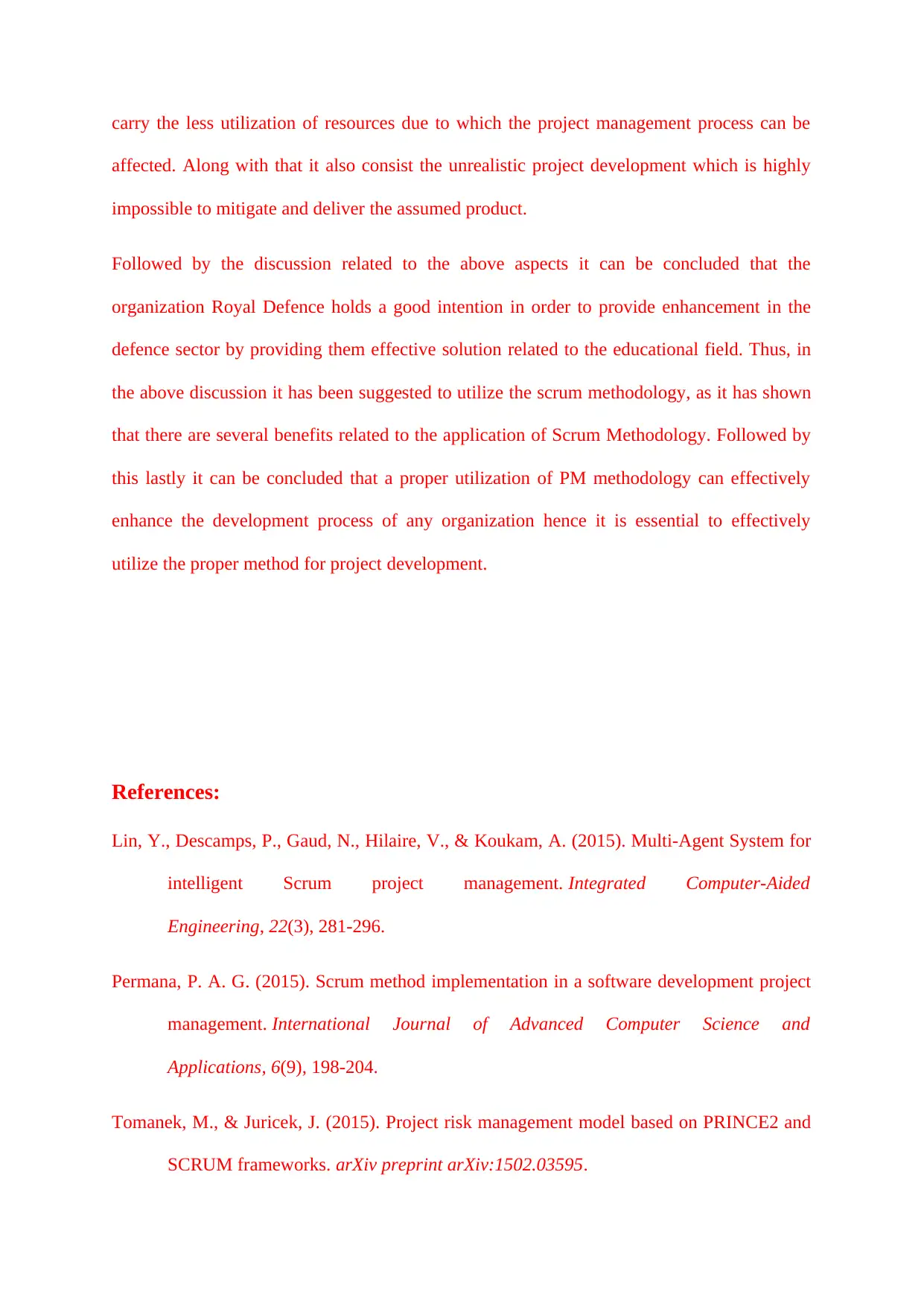Royal Defence: Project Management Methodologies and Strategies
VerifiedAdded on 2023/01/06
|4
|808
|24
Presentation
AI Summary
This presentation examines project management methodologies applicable to the Royal Defence case scenario, a public sector company in the defense and education sector. It begins by outlining the project's demands for an effective management team and discusses key knowledge areas. The presentation then explores six project management methodologies: Agile, Scrum, Kanban, Six Sigma, Waterfall, and PMBOK, with a focus on Scrum as the most suitable approach. It details the Scrum framework processes, knowledge areas, and the benefits of its implementation. The analysis considers Royal Defence's expansion goals and identifies its maturity level, while also highlighting potential limitations of improper PM methodology utilization, such as inefficient resource use, poor planning, scope creep, increased expenses, and project failure. The presentation concludes that the Scrum methodology aligns with Royal Defence's objectives to enhance educational services in the defense sector. It emphasizes the critical role of appropriate PM methodology in improving organizational development, referencing key literature.
1 out of 4











![[object Object]](/_next/static/media/star-bottom.7253800d.svg)